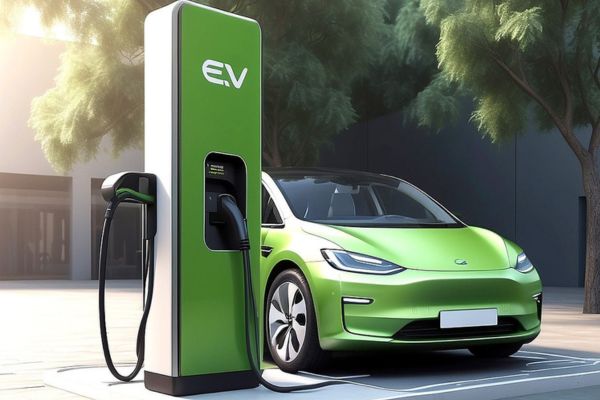A power module in DC fast chargers is a critical component that converts AC grid power into high-voltage DC power to charge EV batteries efficiently. It integrates rectifiers, inverters, and control systems to ensure precise power delivery while optimizing energy efficiency and minimizing heat loss. Power modules are essential for achieving rapid charging speeds and supporting high-power applications, meeting the demands of growing EV adoption. IDTechEx’s latest report, “Charging Infrastructure for Electric Vehicles and Fleets 2025-2035: Markets, Technologies, and Forecasts”, finds a shift towards silicon carbide (SiC) technologies for improved performance, compact designs for scalability, and innovations in thermal management to enhance reliability and reduce operational costs.
Output power shift
Chargers with a capacity of more than 100kW are usually built in a modular approach with stacked power modules that feature hot-swappable designs for easy maintenance and system flexibility. These modules have reached a capacity of 20-50 kW each (with legacy chargers often using 15 kW modules) and will go beyond this in future designs.
However, higher module power is not always better. From a market perspective, 40kW modules have become the mainstream choice. This power configuration optimizes the station’s overall charging capacity while meeting the needs of different single-port charging demands.
Smaller modules require more parallel connections, increasing the station’s weight, while excessively large modules can cause power distribution issues. High power is needed during the initial and mid stages of charging, but as the battery reaches 80% capacity, it requires lower power charging. At this point, using a single overly powerful module makes power distribution difficult, leading to a waste of equipment resources.
Why SiC?
Silicon carbide (SiC) power modules offer significant efficiency gains in DC fast chargers, enabling up to a 2% overall system efficiency improvement compared to silicon (Si)-based solutions. Higher power density facilitated by SiC allows for smaller, lighter designs, making chargers more compact while maximizing power output in the same space for faster EV charging. This has also allowed for the introduction of a new class of low-power DC wall boxes in the 30-50 kW range.
SiC technology reduces cooling requirements, generating less heat than traditional Si modules. This results in lower reliance on active cooling systems, fewer mechanical components, and increased reliability. Additionally, reduced cooling needs lead to quieter operation, making SiC-based fast chargers more suitable for residential and urban environments.
The improved efficiency of SiC modules also directly translates into energy cost savings and environmental benefits. A typical 2% efficiency improvement saves approximately 2 kW of energy for every 100 kW of charging power, leading to lower energy bills and reducing CO₂ emissions per charger.
Silicon carbide (SiC) is essential for advancing future EV charging technologies. It enables bi-directional energy integration like V2X and supports megawatt charging with higher voltages (up to 1,250 V) and currents (up to 3,000 A) for heavy-duty vehicles. SiC also drives wireless power transfer (WPT) advancements, enabling efficient static and dynamic charging with power outputs from 3.7 to 500 kW.
IDTechEx’s benchmarking also finds that these features make SiC ideal for all-in-one fast chargers that meet the demands of ultra-fast EV charging. They allow for smaller, integrated designs while maintaining the ability to deliver peak power outputs of 400–500 kW. The report also finds overall system efficiency moving from 93% at full load to 95% and beyond in state-of-the-art all-in-one units.
Finally, more companies are developing power modules in-house to optimize costs, ensure supply chain resilience, and create customized designs for superior performance and differentiation. However, it requires significant investment in research, development, and manufacturing capabilities. In a competitive and rapidly evolving EV charging industry, this might just be the differentiating factor between leaders and laggards.













